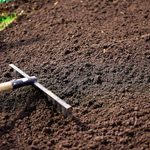New Homeowner’s Guide to Pruning Your Garden

Spring pruning is like spring cleaning: A little effort now pays big dividends when you're done. Here's what to know about pruning your garden.
Our editors and experts handpick every product we feature. We may earn a commission from your purchases.
Pruning may not seem like a lot of fun, but it is a key task that can really improve the appearance of your garden — immediately and long term.
Think of yourself as a sculptor making a few select modifications to a masterpiece in the making. That’s what your garden is — a work of art waiting to be born. And just like sculpting, pruning means removing the excess or unwanted so the remainder can shine.
There’s no better time than spring to see what survived winter and what didn’t. Roses are a good example; a portion of their stems will turn brown and die over the winter. In many parts of the U.S., herbaceous (non-woody) perennials die back to their roots. Many gardeners leave these perennials in place over winter to feed birds and add structure to the garden, but spring is the time to snip them to the ground and allow for new growth.
Pruning can also be done at other times of the year — in early summer to keep vigorous plants in check, or late fall to remove the unsightly remains of sprawling plants.
On This Page
What Is Pruning?
Pruning is removing dead, diseased, injured or unwanted portions of a plant. While many people automatically think of woody plants, such as trees and shrubs, pruning applies to other garden plants as well, including perennials, grasses and bulbs after they’ve finished blooming.
Annuals are also pruned. It’s called deadheading, done during the growing season to tidy up the look of the plants and to encourage more blooms. Other times, sprawling annuals are cut back by one-third to encourage bushiness.
Why Prune Your Garden
- Neater appearance. Removing dead or scraggly growth enhances a plant’s appearance and gives the garden a clean, well-kept look.
- Make room for growth. Without pruning, new growth struggles to make its way through dead portions of the plant, making for unattractive, sometimes oddly shaped plants.
- Shape plants. When pruning, you can help direct a plant’s future growth by eliminating stems that are rubbing against each other, growing toward the center of the plant, or growing too close to a structure. Bonus: Plants often grow back bushier after they’re pruned.
- Keep size in check. Some plants grow impractically tall, like Joe-Pye weed (Eupatorium). Pruning new growth back by one-half in early summer keeps them shorter and less likely to fall over in the wind. Other plants, like Autumn Joy sedum, tend to splay outward if they grow too large, so pruning by one-half early in the summer will keep them more compact.
- Delay flowering. Pruning after new growth has started will delay flowering — something to consider if you want your mums to peak late in the season.
- Plant health. Remove dead, diseased or disfigured portions to keep plants healthy. Note: When pruning diseased stems, disinfect your pruning tool between cuts with a 10 percent bleach solution to avoid spreading the disease. Discard the diseased debris in the trash rather than composting.
When to Prune Plants
- Trees: When dormant. You can see more of their habit at that time and it will be less stressful to the trees.
- Shrubs: Also when dormant. However, when dealing with flowering shrubs, it depends on whether the plant blooms on old growth from previous years or new growth from the current growing season. Shrubs that bloom on old growth should be pruned after they have bloomed.
- Perennials: Early spring before new growth starts.
- Ornamental grasses: Early spring before new growth starts.
- Roses: When dormant. Exceptions: Prune old-fashioned roses, shrub roses and climbers after they have bloomed.
- Bulbs: After they are done flowering, but wait for the leaves to start to turn color so they have a chance to feed the bulb.
- Annuals: Deadhead throughout the season. Prune leggy annuals back to encourage better form.
Garden Pruning Tools
- Garden scissors are best for pruning soft, thin stems, such as those found on herbs and houseplants.
- Bypass pruners have two blades that cut like scissors. Use on live plant stems less than 1/4-in. in diameter.
- Anvil pruners have a blade that smashes into a plate. Use on dead plant stems less than 1/4-in. in diameter.
- Loppers are like bypass pruners, only larger and with increased leverage. Loppers come in different sizes. Some cut stems 1/4- to 1/2-in. thick; others can handle larger stems.
- Hedge shears have long blades well suited for cutting narrow stems, such as ornamental grasses and dead mums.
- Pruning saw is a curved saw with sharp teeth for pruning smaller or hard-to-reach branches.
- Bow saw is a larger hand saw for removing bigger branches.
Pruning Tips
- Keep pruning tools clean, dry and sharp for best performance. Rusty, dull blades leave ragged stems.
- Use the right tool for the job. While hand pruners are great for removing the narrow stems of flowers, they won’t work on thick woody stems. Many pruners have been damaged beyond repair when used to cut something that’s too large for their intended use.
- Keep up with pruning. Don’t wait until plants are overgrown to start the snipping.
- Make use of the debris. Non-woody growth can be composted. Woody debris can be snipped into smaller pieces as a natural mulch or saved for campfire kindling. Discard diseased or infested clippings in the trash.
- Prune selectively in fall. Perennials with rigid stems can be allowed to go to seed and left in place for winter interest, and to feed birds.


